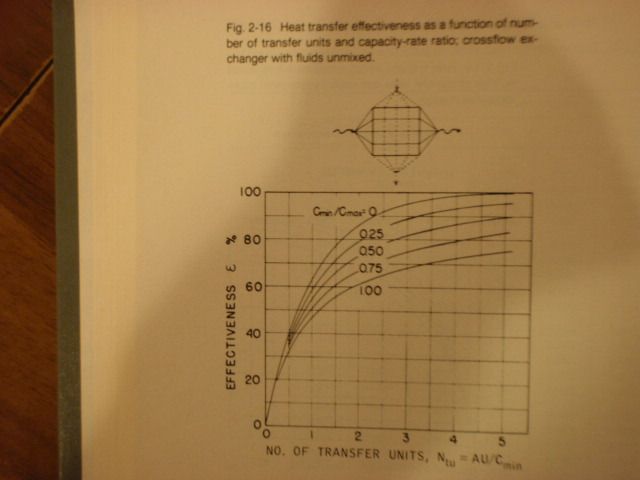Here's a comparison of cross flow and counterflow heat exchangers. The vertical axis is effectiveness, where 100% effectiveness is 100% heat transfer on the lowest flow side. The horizontal axis is a heat exchanger parameter that includes flow rate, heat exchanger size, and heat transfer coefficients. The multiple lines cover a range of flow conditions. Cmin/Cmax = 0 is roughly the case of full air flow and a light trickle of water flow. With a reasonable size radiator, the water will be cooled down to the outside air temperature (100% effectiveness). Cmin/Cmax = 1.00 is close to the case of maximum cooling - pulling a trailer uphill on the highway on a hot day. Even with the largest radiator, the water will not be cooled down to outside air temperature (less than 100% effectiveness).
The first graph is for cross flow radiators, such as automobile radiators.

This one is for counterflow heat exchangers.

While the counterflow heat exchanger is noticeably more effective than the cross flow, a slightly larger cross flow radiator takes out the same amount of heat. The larger cross flow radiator is cheaper than the smaller, more complex, counterflow radiator.